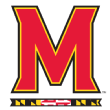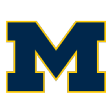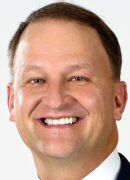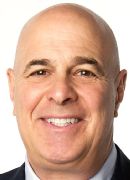Top 25 college hoops players at midseason
Welcome to my regularly scheduled impossible task, listing a mere 25 great players and not fretting about the amazing talents found in Division I's "other" 99.4 percent.
So let us begin. This is a ranking of the nation's top players based on college production this season as opposed to professional potential. Sometimes those two criteria align more or less completely (see No. 1), and other times they are somewhat more contradictory (choose your own best example). When the latter case arises, I rule in favor of college production and rank accordingly. We also ranked the top 100 players before the season.
Based on this premise, these are my selections as the top players of 2015-16 so far:

Freshman | Forward
Thank goodness for Ben Simmons, who has single-handedly salvaged what is now an otherwise rather forlorn offseason ranking of top 25 players put together by yours truly. I wish I had a lot of those choices back, the main issue being that the LSU star's fellow freshmen nationally, with a few notable exceptions, have failed to deliver on expectations.
Conversely Simmons has actually been even better than I thought he'd be, and I had him ranked No. 1. Even though he was in foul trouble in LSU's 18-point win at home over Kentucky this week, Simmons, when afforded the opportunity, was still capable of making John Calipari's McDonald's All-Americans look like plucky but doomed mid-major underdogs. I was reminded anew that it's kind of a big deal to see a 6-foot-10 19-year-old who dominates the glass at will and then exhibits the calm floor mastery of a veteran point guard.
Right now Simmons is the only player in Division I who gives me the palpable sense that he's about to do something not only extraordinary and indelible but also completely feasible for him personally. Quibble with the LeBron talk if you wish, but this is the best player in college basketball, and it's not even close.

Senior | Guard
Hield was having a season for the ages even before the Kansas game. Still, nothing gets the word out quite like going off for 46 points in a three-overtime classic that also happened to be the highest-rated Big 12 "Big Monday" game on record.
Ever since his sophomore season, Hield has consistently been able to score from both sides of the arc as the first option in Lon Kruger's offense. What's new and different and indeed disastrous for opposing defenses this season is that OU's senior is now drawing six fouls per 40 minutes and shooting 90 percent at the line. Against KU, Hield made 12 of 14 free throws to go along with eight 3s.
A deadly perimeter shooter who can also get to the line places tremendous pressure on the opposing defender. My Top 25 is agnostic where pro potential's concerned, but as it happens the NBA likes preternatural scoring ability too. It's no mistake that Hield's draft stock is rising fast.
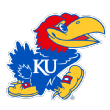
Junior | Guard
You could feel a disturbance in the college hoops punditry force this past week, as a consensus formed suddenly, unmistakably and perhaps even irrevocably. The national player of the year race is now down to just four players: Ben Simmons, Buddy Hield, Kris Dunn and Denzel Valentine. Period.
Great players all, but what, exactly, is going on here? Consider Selden, who has had a virtually perfect first nine weeks. Why is he not part of this discussion? Could it be because, a bit like the college football polls, where you were slotted on media day continues to matter well into the regular season? Let's hope not. A combo guard shooting 56 percent on 2s and 53 percent on 3s as a featured scorer for the nation's top-ranked team surely merits a seat at the table with Ben, Buddy, Kris and Denzel.

Senior | Guard
So Valentine sits for just four measly games due to a knee injury, and suddenly everyone's jabbering about Ben Simmons this and Buddy Hield that. Sic transit gloria mundi, right, Denzel?
The good news for Valentine's POY candidacy -- and, more importantly, for Michigan State's season -- is that Tom Izzo's senior is expected to return to action this weekend against Penn State. Valentine shares some overlap with Simmons in that both players combine assists and scoring with defensive boards. However, unlike the LSU star, Valentine stretches defenses with his perimeter shooting. The Spartans' irreplaceable man will have people jabbering in his direction again soon enough.
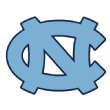
Senior | Forward
Think of Johnson as the in-the-paint version of Wayne Selden. People knew before the season started that he'd be a really good player for a national championship contender, but individual accolades were pre-slotted for a high-scoring teammate named Marcus Paige. (Perry Ellis for Selden, if you will.)
Paige has indeed been superb (see below) but Johnson's been little short of unreal. On literally any other night over the past two months, posting a 39-23 double-double on the road against an NCAA tournament-trajectory opponentwould have been hailed industry-wide as a season-defining event. Alas, Johnson's touching reenactment of Bill Walton's performance in the 1973 national championship game occurred on the same evening as the three-overtime epic between Oklahoma and Kansas. Be that as it may, the facts here are pretty insistent. UNC may have the nation's best offense, and right now Roy Williams' best play call is, in its entirety, "Guys, give the ball to Brice."

Senior | Forward
Now it all makes sense: Bo Ryan was so right to try with all his feisty curmudgeonly might to hold on to to would-be transfer Uthoff back in 2012. Just look at what the erstwhile Badger's been able to accomplish as Iowa's featured scorer. At 6-foot-9 Uthoff is a stretch-4 who scores in the paint and makes 46 percent of his 3s while ranking in the top 20 nationally in block percentage (per KenPom). In any normal season where Denzel Dementia wasn't (quite rightly) sweeping the conference, Uthoff Euphoria would reign supreme and make the Hawkeye senior the man to beat for Big Ten POY honors.

Senior | Forward
I have to wonder whether to some extent Niang's national standing isn't suffering from Excessive Familiarity Syndrome. He's been so good for so long that by now his excellence is taken for granted. Meanwhile the Iowa State senior is actually better than ever, raising his 2-point accuracy (which was already impressive enough, given his workload) by fully 12 percentage points since last season. Maybe this is what happens when you continually seek improvement. All I know is that Niang is still the quartz movement in yet another elite Cyclone offense.

Junior | Guard
Dunn quite simply combines assists with defense better than any scoring point guard in the country, and he's done it now for two consecutive seasons. Start with the fact that the junior's already recorded 10 steals in the 188 Big East possessions where he's been on the floor. Dunn also reliably connects on half his 2s, and this season he's drawing more fouls and hitting more 3s than ever before. The only variable in this evaluative mix is turnovers. Dunn's TO rate has dropped significantly since last season, but it's trending back up after he donated the ball to the other team 12 times in just the last two games (including seven turnovers in Providence's one-point loss to Marquette).

Senior | Guard
Perhaps the best indication of North Carolina's true potential is that, while Paige is widely perceived to be the lead scorer in the Tar Heel attack, this offense has in fact flourished with its point guard acting more as a facilitator than as a traditional hero-ball player. The senior's assist rate is steady and his shooting at the line has dropped to a mere (ha) 81 percent (down from 87), but everywhere else you look Paige is posting career-best numbers. (He's even dunking now.) Suffice it to say when "career-best" is used as a modifier with reference to the performance of a preseason first-team All-Amercian, you're looking at a pretty good year.

Sophomore | Forward
Last season everyone, present company included, was correctly excited that Jahlil Okafor made 66 percent of his 2s as Duke's featured scorer. So I guess I'm not entirely sure why there's relatively little notice much less acclaim being given to the fact that Poeltl is a career 68 percent 2-point shooter. It's true that as a team Utah has struggled to follow up on last season's breakthrough performance, but part of the problem here has been simply Poeltl's availability. The sophomore fouled out after scoring 16 points in 21 minutes at Stanford, and the Utes went on to lose in overtime.

